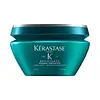What's inside
What's inside
 Key Ingredients
Key Ingredients

No key ingredients
 Benefits
Benefits

 Concerns
Concerns

 Ingredients Side-by-side
Ingredients Side-by-side

Water
Skin ConditioningHydroxypropyl Starch Phosphate
Quaternium-87
CleansingStearyl Alcohol
EmollientBehentrimonium Chloride
PreservativePropylene Glycol
HumectantIsononyl Isononanoate
EmollientCetyl Esters
EmollientCaprylyl Glycol
EmollientCapryloyl Glycine
CleansingCandelilla Cera
EmollientIsopropyl Alcohol
SolventPhenoxyethanol
PreservativeSodium Hydroxide
BufferingLinalool
PerfumingLimonene
PerfumingGeraniol
PerfumingCitronellol
PerfumingAlpha-Isomethyl Ionone
Perfuming2-Oleamido-1,3-Octadecanediol
Skin ConditioningCI 42090
Cosmetic ColorantCI 19140
Cosmetic ColorantParfum
MaskingWater, Hydroxypropyl Starch Phosphate, Quaternium-87, Stearyl Alcohol, Behentrimonium Chloride, Propylene Glycol, Isononyl Isononanoate, Cetyl Esters, Caprylyl Glycol, Capryloyl Glycine, Candelilla Cera, Isopropyl Alcohol, Phenoxyethanol, Sodium Hydroxide, Linalool, Limonene, Geraniol, Citronellol, Alpha-Isomethyl Ionone, 2-Oleamido-1,3-Octadecanediol, CI 42090, CI 19140, Parfum
Water
Skin ConditioningCetearyl Alcohol
EmollientParaffinum Liquidum
EmollientOrbignya Oleifera Seed Oil
EmollientDipalmitoylethyl Hydroxyethylmonium Methosulfate
Parfum
MaskingCetyl Esters
EmollientCetrimonium Chloride
AntimicrobialCaprylyl Glycol
EmollientLinalool
PerfumingCitric Acid
Buffering2-Oleamido-1,3-Octadecanediol
Skin ConditioningCitronellol
PerfumingBHT
AntioxidantGlycine
BufferingArginine
MaskingProline
Skin ConditioningTyrosine
MaskingGlutamic Acid
HumectantGeraniol
PerfumingSerine
MaskingHydroxypropyltrimonium Hydrolyzed Wheat Protein
Skin ConditioningBenzyl Alcohol
PerfumingSafflower Glucoside
Isoeugenol
PerfumingGlycerin
HumectantTrehalose
HumectantTamarindus Indica Seed Polysaccharide
Skin ConditioningMyrothamnus Flabellifolia Leaf Extract
EmollientWater, Cetearyl Alcohol, Paraffinum Liquidum, Orbignya Oleifera Seed Oil, Dipalmitoylethyl Hydroxyethylmonium Methosulfate, Parfum, Cetyl Esters, Cetrimonium Chloride, Caprylyl Glycol, Linalool, Citric Acid, 2-Oleamido-1,3-Octadecanediol, Citronellol, BHT, Glycine, Arginine, Proline, Tyrosine, Glutamic Acid, Geraniol, Serine, Hydroxypropyltrimonium Hydrolyzed Wheat Protein, Benzyl Alcohol, Safflower Glucoside, Isoeugenol, Glycerin, Trehalose, Tamarindus Indica Seed Polysaccharide, Myrothamnus Flabellifolia Leaf Extract
Ingredients Explained
These ingredients are found in both products.
Ingredients higher up in an ingredient list are typically present in a larger amount.
We don't have a description for 2-Oleamido-1,3-Octadecanediol yet.
Caprylyl Glycol is a humectant and emollient, meaning it attracts and preserves moisture.
It is a common ingredient in many products, especially those designed to hydrate skin. The primary benefits are retaining moisture, skin softening, and promoting a healthy skin barrier.
Though Caprylyl Glycol is an alcohol derived from fatty acids, it is not the kind that can dry out skin.
This ingredient is also used as a preservative to extend the life of products. It has slight antimicrobial properties.
Learn more about Caprylyl GlycolCetyl Esters is a synthetic wax made up of mostly fatty acids and fatty alcohols. It is strcturally similar to wax taken from whales.
As an emollient, it creates a thin barrier on the skin. This barrier prevents moisture from escaping.
This ingredient may not be fungal-acne safe.
Learn more about Cetyl EstersCitronellol is used to add fragrance/parfum to a product. It is often derived from plants such as roses. In fact, it can be found in many essential oils including geranium, lavender, neroli, and more. The scent of Citronellol is often described as "fresh, grassy, and citrus-like".
Since the Citronellol molecule is already unstable, Citronellol becomes irritating on the skin when exposed to air.
Citronellol is a modified terpene. Terpenes are unsaturated hydrocarbons found in plants. They make up the primary part of essential oils.
Citronellol is not able to be absorbed into deeper layers of the skin. It has low permeability,
Citronellol is also a natural insect repellent.
Learn more about CitronellolGeraniol is used to add fragrance/parfum to a product. It is the main component of citronellol. It is a monoterpenoid and an alcohol.
Monoterpenes are naturally found in many parts of different plants.
Geraniol can be found in many essential oils including Rose Oil and Citronella Oil. The scent of Geraniol is often described as "rose-like". Many foods also contain Geraniol for fruit flavoring.
Geraniol can irritate the skin when exposed to air. However, irritation depends on the ability of geraniol to penetrate into the skin. In general, geraniol is not able to penetrate skin easily.
Geraniol is colorless and has low water-solubility. However, it is soluble in common organic solvents.
Like citronellol, it is a natural insect repellent.
2,6-Octadien-1-ol, 3,7-dimethyl-, (2E)-
Learn more about GeraniolLinalool is a fragrance and helps add scent to products. It's derived from common plants such as cinnamon, mint, citrus, and lavender.
Like Limonene, this ingredient oxidizes when exposed to air. Oxidized linalool can cause allergies and skin sensitivity.
This ingredient has a scent that is floral, spicy tropical, and citrus-like.
Learn more about LinaloolParfum is a catch-all term for an ingredient or more that is used to give a scent to products.
Also called "fragrance", this ingredient can be a blend of hundreds of chemicals or plant oils. This means every product with "fragrance" or "parfum" in the ingredients list is a different mixture.
For instance, Habanolide is a proprietary trade name for a specific aroma chemical. When used as a fragrance ingredient in cosmetics, most aroma chemicals fall under the broad labeling category of “FRAGRANCE” or “PARFUM” according to EU and US regulations.
The term 'parfum' or 'fragrance' is not regulated in many countries. In many cases, it is up to the brand to define this term.
For instance, many brands choose to label themselves as "fragrance-free" because they are not using synthetic fragrances. However, their products may still contain ingredients such as essential oils that are considered a fragrance by INCI standards.
One example is Calendula flower extract. Calendula is an essential oil that still imparts a scent or 'fragrance'.
Depending on the blend, the ingredients in the mixture can cause allergies and sensitivities on the skin. Some ingredients that are known EU allergens include linalool and citronellol.
Parfum can also be used to mask or cover an unpleasant scent.
The bottom line is: not all fragrances/parfum/ingredients are created equally. If you are worried about fragrances, we recommend taking a closer look at an ingredient. And of course, we always recommend speaking with a professional.
Learn more about ParfumWater. It's the most common cosmetic ingredient of all. You'll usually see it at the top of ingredient lists, meaning that it makes up the largest part of the product.
So why is it so popular? Water most often acts as a solvent - this means that it helps dissolve other ingredients into the formulation.
You'll also recognize water as that liquid we all need to stay alive. If you see this, drink a glass of water. Stay hydrated!
Learn more about Water